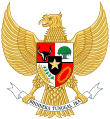
The Indonesian National Revolution, or the Indonesian War of Independence, was an armed conflict and diplomatic struggle between the Republic of Indonesia and the Dutch Empire and an internal social revolution during postwar and postcolonial Indonesia. It took place between Indonesia's declaration of independence in 1945 and the Netherlands' transfer of sovereignty over the Dutch East Indies to the Republic of the United States of Indonesia at the end of 1949.

The Renville Agreement was a United Nations Security Council-brokered political accord between the Netherlands, which was seeking to re-establish its colony in South East Asia, and Indonesian Republicans seeking for Indonesian independence during the Indonesian National Revolution. Ratified on 17 January 1948, the agreement was an unsuccessful attempt to resolve the disputes that arose following the 1946 Linggadjati Agreement. It recognised a cease-fire along the Status Quo Line or so-called "Van Mook Line", an artificial line which connected the most advanced Dutch positions.
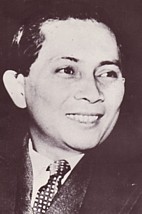
The position of Prime Minister of Indonesia existed from 1945 until 1966. During this period, the prime minister was in charge of the Cabinet of Indonesia, one of the three branches of government along with the People's Representative Council and the president. Following his 1959 decree, President Sukarno assumed the role and powers of prime minister until his resignation in 1966.

The Dutch–Indonesian Round Table Conference was held in The Hague from 23 August to 2 November 1949, between representatives of the Kingdom of the Netherlands, the Republic of Indonesia and the Federal Consultative Assembly, representing various states the Dutch had created in the Indonesian archipelago.

The State of East Indonesia was a post–World War II state formed in the eastern half of Dutch East Indies. Established in December 1946, it became part of the United States of Indonesia (USI) in 1949 at the end of the Indonesian National Revolution, and was dissolved in 1950 with the end of the USI. It comprised all the islands to the east of Borneo and of Java.

Ide Anak Agung Gde Agung, alternatively spelled too as Ida Anak Agung Gde Agung, was an Indonesian ethnic-Balinese politician, historian, and National Hero, who was the Raja of Gianyar, Bali, and served as the prime minister of the State of East Indonesia from 1947 to 1949, and the Foreign Affairs Minister of Indonesia from 1955 until 1956.

Operation Product was a Dutch military offensive against areas of Java and Sumatra controlled by the de facto Republic of Indonesia during the Indonesian National Revolution. It took place between 21 July and 4 August 1947. Referred to by the Dutch as the first politionele actie, in Indonesia, the military offensive is more commonly known in Indonesian history books and military records as Agresi Militer Belanda I.

The Malino Conference was organised by the Dutch in the Sulawesi town of Malino from 16 to 25 July 1946 as part of their attempt to arrange a federal solution for Indonesia. From the end of World War II, Indonesian Republicans had been trying to secure Indonesian Independence from the Dutch colonial control.
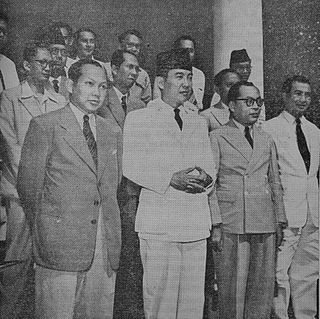
The Republic of the United States of Indonesia Cabinet was established as a result of the formation of the United States of Indonesia following the transfer of sovereignty from the Dutch colonial power. It lasted less than a year before Indonesia became a unitary state.

The Federal Consultative Assembly, (BFO) was a committee established on 8 July 1948 to discuss the form of the planned federal United States of Indonesia. Its membership comprised the leaders of the various federal states established by the Dutch in the areas they occupied following their attack on the areas of Indonesia controlled by republican forces during the Indonesian National Revolution (1945–1949). It took part in negotiations with the Dutch in August and September 1948, and participated in the Dutch–Indonesian Round Table Conference at which the Dutch agreed to hand over sovereignty to the United States of Indonesia.
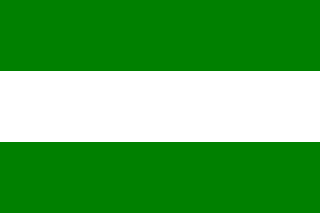
The State of Pasundan was a federal state (negara bagian) formed in the western part of the Indonesian island of Java by the Netherlands in 1948 following the Linggadjati Agreement. It was similar to the geographical area now encompassed by the current provinces of West Java, Banten and Jakarta.

The United States of Indonesia was a short-lived federal state to which the Netherlands formally transferred sovereignty of the Dutch East Indies on 27 December 1949 following the Dutch–Indonesian Round Table Conference. This transfer ended the four-year conflict between Indonesian nationalists and the Netherlands for control of Indonesia. It lasted less than a year, before being replaced by the unitary Republic of Indonesia.

The Denpasar Conference was held from 7–24 December 1946 at the Hotel Bali, Denpasar and resulted in the establishment of the State of East Indonesia, part of the United States of Indonesia.
The Cabinet of the State of East Indonesia served as the central government apparatus of the State of East Indonesia, headed by a prime minister who were appointed by the head of state. During the three-year lifetime of the state between 24 December 1946 and 27 December 1949, there were eight cabinets in total, headed by six different prime ministers.

The House of Representatives of the United States of Indonesia was one of the two national legislative assemblies in the United States of Indonesia (RUSI). The council was formed after the establishment of the Indonesian federal state, consisting of 150 members.
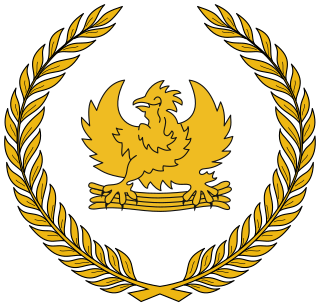
The Provisional Senate of East Indonesia was the upper house of the parliament of State of East Indonesia, a component of the United States of Indonesia. The Senate existed from May 1949 to August 1950, when the State of East Indonesia was dissolved into the unitary Republic of Indonesia.

The Flags of the United States of Indonesia refers to the state flags that were used as the official state symbols of the United States of Indonesia, the predecessor state of the Republic of Indonesia. The flag that were hoisted during the proclamation of independence on 17 August 1945 remained as the official flag of the United States of Indonesia after its transfer of sovereignty on December 27, 1949 and it was written on the Federal Constitution of 1949.

The United Nations Commission for Indonesia was a United Nations commission formed to replace the Good Offices Commission known in Indonesian as Komisi Tiga Negara. The purpose of UNCI was to continue the duties of the previous commission, while at the same time overseeing the handover of the Indonesian territory to the republican government and reporting regularly to the United Nations Security Council. UNCI was formed after the Good Offices Commission was deemed to have failed to reconcile the conflict. UNCI played an important role in the Dutch–Indonesian Round Table Conference.

The Provisional Representative Body of East Indonesia was the lower house of the legislature of the State of East Indonesia, a constituent of the United States of Indonesia. It was formed at the Denpasar Conference in 1946, and dissolved in 1950.
